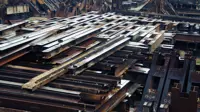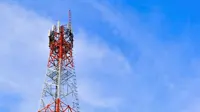Rafale deal to give IAF much-needed strike capability
22 Sep 2016
As India and France on Wednesday finally agreed upon the terms and conditions for the purchase of 36 Rafale jets by the Indian Air Force from Dassault Aviation, there was probably more relief than jubilation.
Dassault had won the tender in January 2012 but had been locked in negotiations with the Indian government over the technical details ever since. When Prime Minister Narendra Modi came to office, he tried to break the impasse and India initiated talks directly with the French government for an inter-government agreement but even that, until just a month ago, seemed to be going nowhere, says a Firstpost analysis.
The conclusion of the deal, to be signed on 23 September, will be a relief to the IAF as well as Dassault. The first planes will begin to arrive 36 months hence and the entire order will be completed a further 30 months from then.
In fact, India's search for a medium multi-role combat aircraft had begun almost a decade ago in August 2007 when finances finally allowed the IAF to begin replacing its aging fleet of MiGs. Four companies participated in the competition - Saab, Mikoyan, Lockheed and Dassault. The Rafale's similarities to the Mirage 2000 that the IAF already operated, its lower life-cycle costs, and its naval and nuclear strike variants clinched the deal for Dassault.
Although the deal was originally envisaged to be for 126 aircraft with an option of 74 more, the final agreement has settled around 36 jets. Projected to cost $12 billion in 2012, that figure has also come down to $7.88 billion. However, India has managed to negotiate for several bells and whistles in the smaller deal and it is reported that the agreed upon price is around $750 million less than what the previous government was willing to pay.
Dassault has agreed to make India-specific modifications to the planes, allowing the integration of Israeli helmet-mounted displays. Additionally, MBDA, the European missile manufacturer, will provide the Meteor, an air-to-air missile with a beyond-visual range of over 100 km, and Storm Shadow (known as Système de Croisière Autonome à Longue Portée – Emploi Général or SCALP in the French military), an air-launched cruise missile with a range of over 560 km, with the Rafales. Both these acquisitions will significantly improve the reach of the IAF, allowing them to shoot deep into enemy airspace or territory without crossing international boundaries.
Integration of the Brahmos-NG, a smaller version of the Brahmos supersonic missile, will make the Rafale a lethal platform.
A complete transfer of technology, including for the Thales RBE2-AA radar and software source code, spare parts, maintenance, training, and a guarantee of 75 per cent operational availability for the first five years takes the price of the package up from a base price of $3.8 billion for just the Rafales to the final amount. A 50 per cent offset agreement obligates Dassault to re-invest half the money from the deal in India, creating hundreds of new jobs.
India's decision to buy only 36 planes, barely two squadrons, will not fill the gap in the IAF's numbers, nor will the Rafale's nuclear capability add much to the Indian offensive armoury. One can only assume that once the first set of jets is delivered, a further order will be placed to augment the numbers, including naval variants. This is even more likely if Dassault begins to manufacture in India - with the transfer of technology, it would be easy to domestically ramp up numbers as India has done with the Sukhoi.
The Rafale's primary role is to replace the IAF's retiring fleet: while the Tejas Light Combat Aircraft is expected to step in at the low end, the Rafale will occupy the mid-level force structure with the expectation that an advanced indigenous descendant of the Tejas or the fifth generation fighter that India is jointly developing with Russia will form the top of the line component.
Immediately, the Rafale is expected to give India dominant status in the air. Wedded to airborne control systems, the Rafale and its armaments can essentially hit enemy targets while staying out of range of their fighter jets. Though not the essential component of a future cross-border strike, the Rafale can provide the additional firepower if needed.
As the IAF's description of the tender suggests, the Rafale is a multi-role platform that can be deployed for air dominance, ground support, aerial reconnaissance, and nuclear delivery. The Rafale has already been used in all these capacities - except the last, of course - in Afghanistan, Libya, Mali, and Iraq and maintained a high operational rate throughout.
The Rafale, when it arrives, will substantially augment the Indian Air Force's capabilities in several mission profiles and put India's hostile neighbours on notice. An additional acquisition of domestically manufactured Rafales post-2021 would buy the Indian defence establishment time to complete its advanced fighter aircraft for the IAF. For an enervated service, the arrival of the Rafales will be a breath of fresh air. (See: Cabinet clears decks for buying 36 Rafale fighter planes).









.webp)














